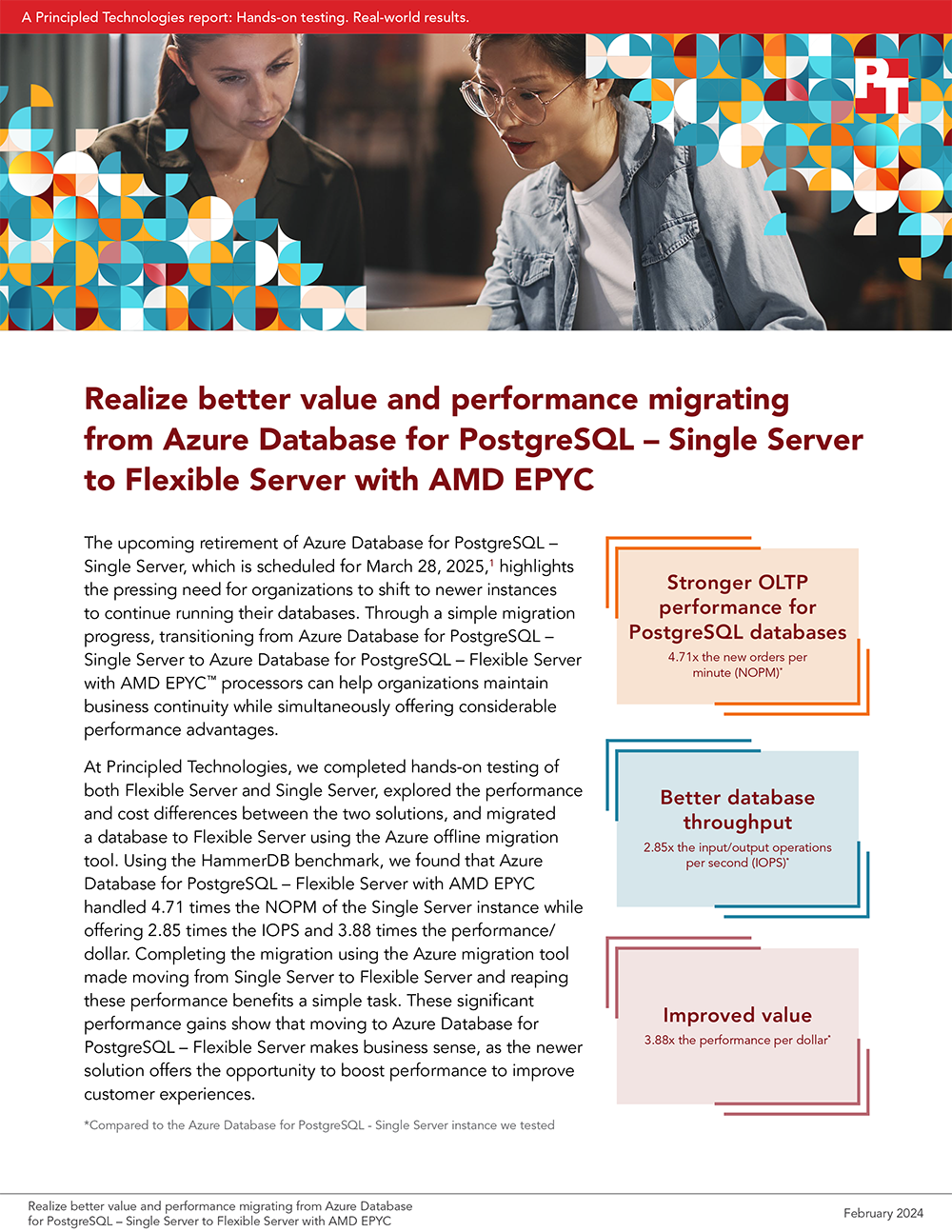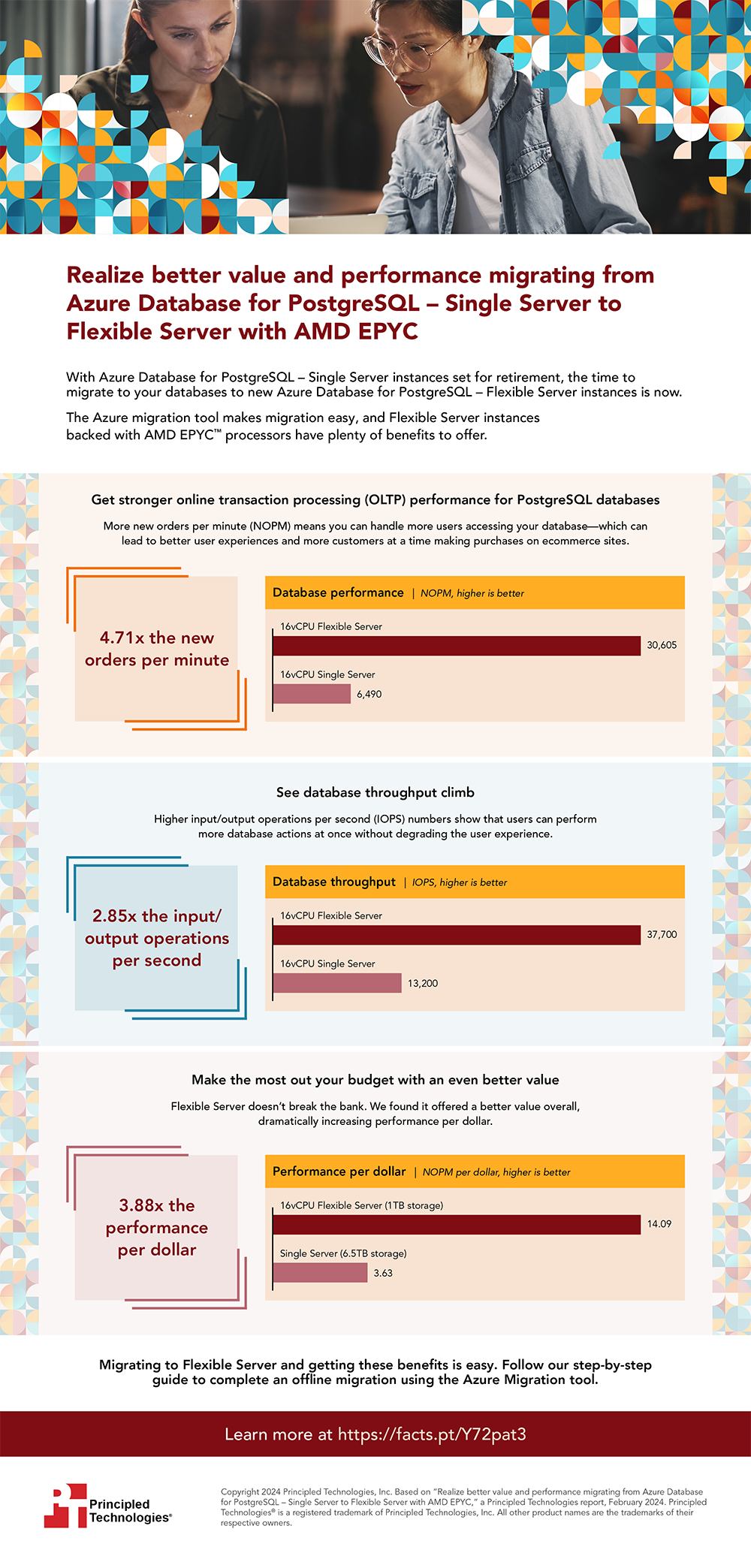
For the many enterprises around the globe that use PostgreSQL to manage large volumes of complex data in high-transaction scenarios, database stability and predictability are top priorities. In such environments, the idea of rocking the boat by transitioning to a new database system can bring stress and present many practical challenges. Organizations that currently use Azure Database for PostgreSQL – Single Server are facing the prospect of having to migrate before March 28, 2025, when support for Single Server ends. The good news for Single Server clients is that migrating to Azure Database for PostgreSQL – Flexible Server with AMD EPYC processors can be a fast and simple process that results in significantly better database performance and value.
We used the industry standard HammerDB benchmark to measure the database performance and throughput of Single Server and Flexible Server solutions. We also looked at the cost differences between the two options, and we migrated a database from Single Server to Flexible Server using the Azure offline migration tool. We found that the Flexible Server solution with EPYC processors delivered 4.71 times the database performance and handled 2.85 times the throughput of the Single Server instance—yielding 3.88 times the performance per dollar. In addition, using the Azure offline migration tool helped make a secure transition from Single Server to Flexible Server quick and easy.
Our results show that companies don’t need to worry about the decision to migrate to Flexible Server instances—or the migration process itself. Upgrading to Azure Database for PostgreSQL – Flexible Server is a straightforward process that can enhance database performance and provide cost benefits. Migrating early, instead of waiting until 2025, could accelerate the timescale for improved user service and generate potential budget efficiencies in the near term.
For more details about the Azure PostgreSQL migration process and our comparison tests, check out the report and infographic below.
Principled Technologies is more than a name: Those two words power all we do. Our principles are our north star, determining the way we work with you, treat our staff, and run our business. And in every area, technologies drive our business, inspire us to innovate, and remind us that new approaches are always possible.







